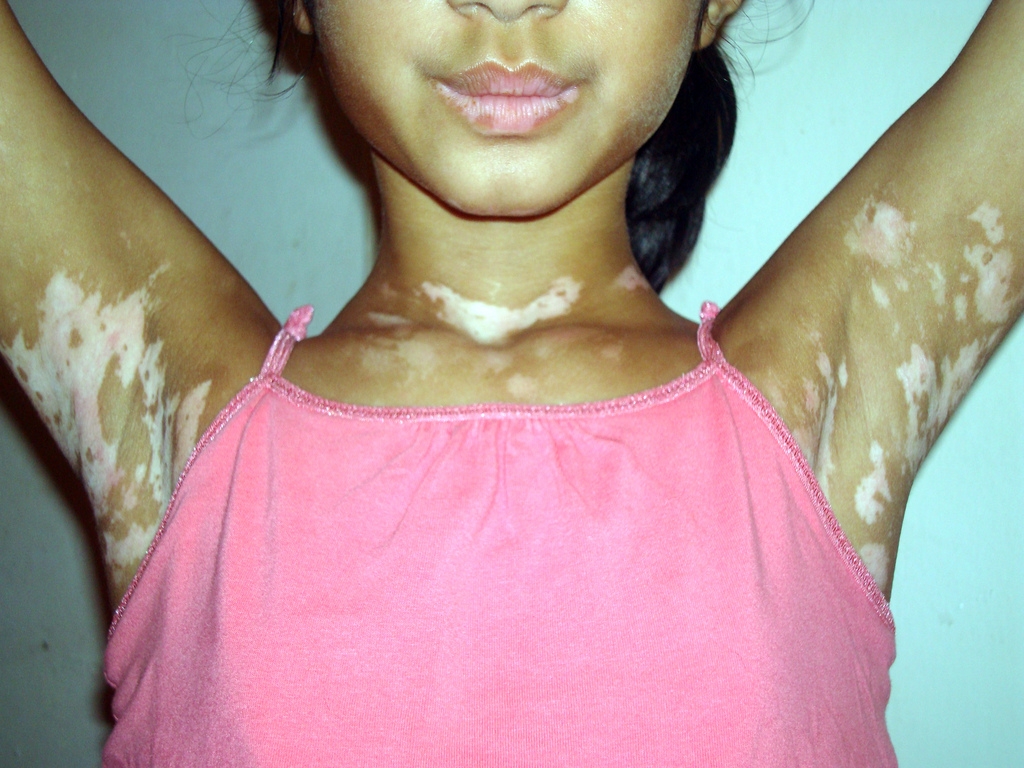We live in a world that only looks and admires surface beauty. Anyone with fair, clear skin is admired more that those with dark skin. In a scenario like this, if a person is suffering from Leucoderma or Vitiligo, his/her social life is as good as dead.
Leucoderma or Vitiligo is a skin condition in which white patches start appearing on the skin. It is not just distressing but also very embarrassing for the person suffering from this condition. Leucoderma also known as Vitiligo, which means white skin, is a result of lack of skin pigment called melanin. Though these patches are not an indication of any kind of health issues, they do look ugly, especially in people with dark skin. This might lead to depression and low self-esteem in those suffering from leucoderma.
Previously, leucoderma was said to ‘affect’ people due to the wrath of gods or sins carried over from past lives. There was also the fear that it might get handed over to Gen-next. These were some of the reasons which led the society to keep the people suffering from leucoderma at a distance.
In fact, leucoderma occurs when cells producing melanin stop doing so. This causes white patches of irregular shapes on your skin which gradually become more and more noticeable.
Now one thing is for sure – leucoderma is not a curse. It can affect people of all races all over the world with the downside that it is more obvious in people with darker skin.
Causes of Vitiligo or Leucoderma
Though the causes for leucoderma are not known, dermatologists as well as researchers have different theories. The most common theory is that depigmentation is because leucoderma is an autoimmune disease – a disease in which your immune system reacts against your body’s own organs or tissues. Hereditary could also be a cause as there is an increased incidence of leucoderma in some families. There have also been cases wherein leucoderma was triggered due to sunburn or even emotional trauma. Despite all this, no one has been able to prove or find a definite cause for leucoderma.
Some of the factors which may precipitate leucoderma are gastro-intestinal tract disorders (worms, jaundice and amoebiosis), use of drugs for long period and local causes such as burns or exposure to chemicals.
Symptoms of Vitiligo or Leucoderma
The prominent sign of leucoderma that you may notice is white patches on your skin, due to loss of pigment.
Though leucoderma may affect any part of your body, the loss of color/depigmentation is seen first on the sun-exposed parts of your skin, such as face, lips, hands, feet and arms. While leucoderma can affect a person of any age, it usually is seen to appear between the ages of 10 and 30.
Treatment of Vitiligo or Leucoderma
The diagnosis is made by a detailed discussion and gathering information about your family history of leucoderma, your history of sensitivity to the sun, other skin conditions such as rash, sunburn or skin trauma.
Along with this, a Dermatec Analysis is done and some blood tests are advised to check for other associated conditions like anemia, diabetes or hypothyroidism.
If the size of the white patches are more in number you may be advised combination treatments. Usually the aim of the treatment is to re-pigment the patches.
If you are one of those who are really embarrassed to step out of the house because of the white patches, here are a few health-care tips:
- Always use a sunscreen of SPF 30 and above. Sunscreen not only protects your skin from sunburns, but also stops it from tanning.
- Using a concealing make-up will give your confidence a boost.
- Try out different brands of cosmetics and find the right one for you
- Self-tanners also help in concealing the white patches by adding color to the depigmented area
Coping with leucoderma or Vitiligo
- If you are suffering from leucoderma do not be ashamed, depressed or even worried about appearing in public.
- Be confident, as leucoderma is a benign, non-infectious condition of the skin.
- Follow your treatment regime and learn everything there is to know about the condition.
- Try getting in touch with groups who have leucoderma. Sharing your experiences will help you cope better.
- Do not bottle up your emotions. Talk to your loved ones and seek their understanding and support.
Dr. Pranjal Shamsher is the first Skin Doctor in Bangalore to offer natural, non-surgical and non-invasive treatments for skin disorders. With over 25 years of experience in the field of Skin and Dermatology, Dr. Pranjal Shamsher has devised a unique Multi-Therapy approach involving the use of several therapies at the same, to treat the most stubborn, obstinate and long-standing skin disorders with a skin-friendly and 100% side-effect free results. Her integrated and Multi-Therapy approach has helped many chronic disease sufferers to recover safely without any side-effects.
Read More Skin Articles by Skin Consultant Dr. Pranjal Shamsher
Dr. Shahid Shamsher is one of India’s first certified Trichologist practicing in the field of Trichology for 27 years and is recognized as one of the Best Hair Doctor in Bangalore. He is the only Trichologist in India to be simultaneously certified from the U.K, Australia, and India.








